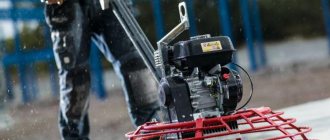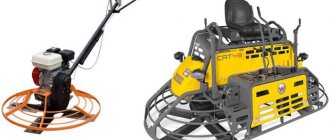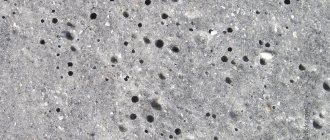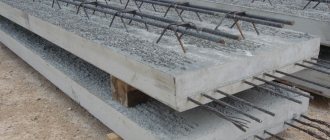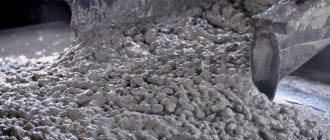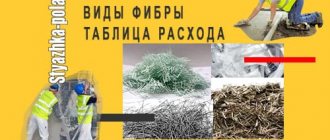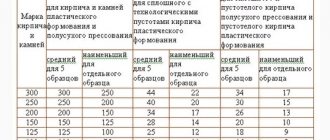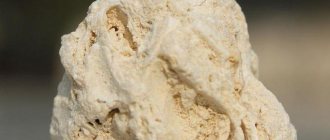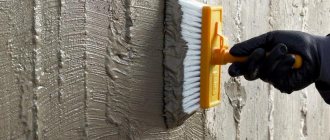A concrete grinding helicopter is a device that allows you to prepare the surface for further work, and in some cases, grouting will be enough to give the desired appearance to the room. This method is considered the most effective for creating a flat floor without drops and cracks.
Source generaltool.ru
Purpose
A trowel may be required by both individuals and entrepreneurs who have their own workshops and workspaces that do not require special visual aesthetics. The device is used to remove uneven surfaces, strengthen the surface and eliminate existing cracks. A helicopter makes it possible to perform a large amount of work in a short period of time.
If the room will be used exclusively for industrial or production purposes, then grouting the floors can be the final stage of surface treatment. A flat floor in warehouses is more than enough, and additional design solutions in such situations will be unnecessary.
Grouting the surface also has another not so obvious advantage - it strengthens the surface. The fact is that when polishing, the pores are rubbed out, cracks are removed and concrete milk is formed, which directly affects its strength and service life.
Single rotor trowels
Due to their compact size, relatively light weight (43÷106 kg), ease of transportation to the construction site and a fairly affordable price, single-rotor machines are most in demand and widely represented on the market.
Attention! Grinding the self-leveling floor using such devices is unacceptable, since it contains polyurethane or epoxy resins. For these purposes, a special grinder is used.
Single-rotor trowels with petrol engine
This is the most common type of helicopter trowel for concrete. The single-rotor trowel consists of:
- frames;
- gasoline engine;
- fuel tank;
- clutch mechanism;
- gearbox;
- crosspieces for attaching blades or disk;
- ring guard to protect the operator from the rotating blades (or disk);
- handles, with controls installed on it (throttle handle, blade tilt regulator, emergency switch in the absence of an operator).
These models are equipped with gasoline engines ranging from 4 hp (2.9 kW) with a volume of 119 cm³ to 11 hp (8 kW) with a volume of 389 cm³. The engine is started using a manual recoil starter.
A popular budget medium-power model in this category “Impulse Z600L” from (China), equipped with a Loncin LC200F engine (volume 196 cm³, power 6.5 hp), costs 35,000÷36,000 rubles.
Attention! Smoothing and rubbing of a concrete wall using such equipment is unacceptable.
Electrically driven single rotor trowels
These devices are used in rooms with insufficient ventilation of small and medium areas. The design of such products is similar to gasoline single-rotor machines, only instead of an internal combustion engine, an electric motor with a power of 750÷2000 W is installed on such devices.
Almost all manufacturers of equipment in this category produce helicopter concrete trowels in two versions:
- powered from a 220 V network (ordinary household power supply);
- powered by a three-phase network with a voltage of 380 V (for professional use).
These products are delivered practically assembled. You just need to install the control handle in the bracket, insert the mounting bolts into the drilled holes and tighten them with a screwdriver; then connect the cable to the electric motor. To do this, use a screwdriver with a cross-shaped bit to remove the cover of the electric motor junction box. In accordance with the diagram shown on the back of the cover, connect the electrical cable and install the cover in place. The concrete helicopter is ready for work.
Important! In the electrical panel to connect the cable, it is necessary to install an RCD (differential switch) to protect the operator from electric shock and use a drill to make a hole for installing the socket.
The floor grinding machine “JM600” from (France) with a 750 W motor (220 or 380 V) and a Ø=600 mm disc currently costs 25,500÷26,000 rubles.
On a note! Some manufacturers produce special trowels for semi-dry screeding.
Application and principle of operation
Grouting floors with helicopters has several positive effects: the concrete acquires the necessary properties and characteristics, and the service life of the coating increases due to the elimination of the risk of delamination due to cracks.
Source tildacdn.com
The technology for working with the device is extremely simple: using blades that rotate at high speeds, special mixtures are rubbed into the concrete to strengthen the top layer of the surface. Professionals choose certain angles of inclination of the disks, which allows them to increase the efficiency of the blades.
To grout concrete you will need to go through two stages. When the concrete dries a little (no more than 20 hours from the completion of pouring), it is necessary to carry out a rough grout. You can determine the required degree of hardening by standing on the concrete solution, in which there should be a trace no more than 3 mm deep. To maximize the performance properties of the material, cement-based toppings are used. Work begins after the solution has completely dried and soaked into the floor.
For work, the composition is evenly distributed over the entire surface of the floor, ⅔ of the total volume of the mass. The remaining ⅓ is rubbed into the concrete after a certain time, depending on the type of composition used. Then the grouting itself begins - the helicopter is switched to a lower rotation speed. You need to walk around the entire perimeter twice, each time doing the work perpendicularly.
Source stachanovec.ru
The final stage of work begins 16 hours after the final grouting, which was considered the last step of the rough work. You can understand that the rough finishing is completely completed by the properties of the concrete: it should not remain on your hands, be pressed, and its color should change to a darker one.
To improve the properties of concrete, dust-removing impregnation is rubbed into it. This will prevent the formation of cracks in the future. This time, a high blade rotation speed is selected. The work is performed twice, each time perpendicularly.
Concrete Grouting Machines
After pouring and vibropressing, during the initial setting process, the concrete is treated with troweling equipment in order to form a perfectly smooth, even dust-free floor surface in the shortest possible time.
The concrete surface is compacted by the action of special machine elements at high speed. Sanding is considered a cost-effective and effective finishing option.
Kinds
Depending on the type of engine, the cars are petrol, diesel and electric. Each option has certain advantages and disadvantages and features.
Types of trowels by drive type:
- Electrical
– they operate from a regular network, are usually used indoors, often these are medium-power models, and do not require special ventilation. If you plan to do the work outside, you will have to take care of a generator.
- Gasoline
– they are used outdoors, they are mobile, but they are used very carefully indoors (a special ventilation system is required), and they require quick processing of large areas.
- Diesel
- are the least common. They are usually chosen by those who have the opportunity and desire to use diesel fuel; they can differ in performance and parameters.
The concrete trowel can be single/double rotor. In interior spaces, single-rotor units are usually used; they can differ in the type of installed engine and its power, and are equipped with working disks with a diameter of 600 to 1200 millimeters.
The main feature of single-rotor units is manual execution of work. When working with the machine, the operator must constantly be near it to control the process of moving the device and grinding.
Gasoline models are equipped with internal combustion engines with a volume of 120 cm3 and a power of 4-11 hp. Electric trowels operate on alternating current 220/380 V, showing 750-2000 W.
Two-rotor concrete machines are most often made in the form of a high-tech self-propelled unit, which is equipped with a gasoline (less often diesel) engine, the working volume is 390-1370 cm3. The motor, via a belt/worm drive, drives two gearboxes located at the bottom of the unit, and they drive replaceable sanding/troweling discs.
Main characteristics of a two-rotor trowel:
- Used for processing concrete screeds with an area of 700 square meters or more.
- Demonstrates a working grip of up to 200 millimeters, reducing time and labor costs for processing.
- The device is always made in the format of an autonomous self-propelled vehicle.
- Typically, the control panel is located in the center of the installation on top, there is also a comfortable seat for the operator, and control and monitoring levers are located on the left and right.
- The unit is started with the key on the control panel.
- Many models are equipped with high-power headlights at the front and rear, so you can grind and process concrete even in the dark at night.
- All installations must include a drive locking system (relevant in cases where the operator leaves the workplace).
It must be remembered that a concrete smoothing machine cannot be used to process a polymer floor, since the high-viscosity polyurethane and epoxy resins included in its composition contribute to the rapid deterioration of the equipment.
Grouting machines can also differ in rotor diameter - the value is in the range of 30-120 centimeters (the larger the diameter, the more efficient the mechanism is).
Design and principle of operation
A helicopter-type concrete trowel is needed to strengthen the concrete screed, making it smooth and even. The “milk” protruding after pouring can cause delamination of concrete during operation.
The trowel, thanks to the operation of grinding discs at frequent speeds (with a certain vertical pressure, high speed), rubs the materials of the upper layers of the screed into the body of the concrete, grinds and smoothes out irregularities.
The main elements of a manual trowel:
- The frame and handle where the control device is located. They perform a load-bearing function, since it is to these elements that the main mechanisms are attached. Usually made in the form of a disk with a long handle, but other configurations can exist.
- An engine of sufficient power - most often gasoline or electric.
- Rotor (nozzle) – for performing the main work of grouting concrete like a fan.
Self-propelled trowels can be made in a variety of models and configurations; they are usually a small piece of special equipment that moves independently and provides maximum comfort to the operator, subject to high productivity.
Rough grout
Also called roughing. The main priority of such grouting is doorways, columns and walls, where the concrete is most exposed to pressure. When working, the floor screed helicopter kneads the screed layer, allowing it to become denser due to the redistribution of different fractions: the heavy ones end up at the bottom, and the light ones at the top.
Source ooo-mig.ru
The result of the work is the appearance of cement laitance, the characteristics of which depend on the initial properties of the concrete.
How to grind concrete with a helicopter for roughing:
- If a sufficient amount of concrete milk has been released, then the procedure for distributing it over the surface begins. It is for this purpose that the total volume of the mixture is divided into ⅔ and ⅓, rubbing them in successively.
- The amount of topping used is about 3-8 kg, depending on the expected load on the floor.
- The working disk is selected depending on the shape of the edge. For smooth operation, an edge beveled at 45 degrees is required, and for processing rough areas (junctions to walls, columns) - 90 degrees.
Stages of grouting concrete floors
Grouting of concrete is carried out according to a certain algorithm, which must be followed, regardless of the scale and specifics of the work.
How to grout concrete with a machine:
- 3-7 hours after pouring (as soon as the concrete acquires initial strength - the depth of the mark is approximately 3-4 millimeters), rough grinding is performed.
- The disc rubs in the topping (a special finishing compound) and makes the floor more durable. The disk rotation speed should be 50-100 rpm.
- The initial application involves the use of about 70% of the topping, the remaining volume is distributed over the surface after the concrete has darkened (before the water has evaporated).
- After 10 hours, the second stage is carried out - finishing grouting. The blades of the machine remove all irregularities and layers, and to avoid cracks, the surface must be coated with a special impregnation.
Finish grout
For the last stage of leveling the concrete by helicopter, you will need a tool with high power. In an ideal situation, the procedure should be carried out twice.
Source concretepol.com
The first time the edges of the blade should be no more than 10 mm from the floor, and the second time no more than 25 mm. This technology will allow you to achieve a perfectly transparent surface.
Examples of manufacturers
The market is saturated with troweling devices, differing in the nuances of design, configuration, and price. For example, the single-rotor electric unit QJM-600 Werk (Germany) is well balanced, has a folding handle, a rotating protective rim (facilitates sanding near walls), and depth adjustment on the handle. Power 3 kW, grout diameter 60 cm, rotation speed 50 – 115 rpm, weight 53 kg.
A model of a more powerful product is Tremix g1203b (Sweden). A Honda GX 270 (8 hp) gasoline engine is installed. Includes a 120 cm disc. Weight (with blades and disc) 105 kg. An example of a two-rotor self-propelled vehicle is LR900 (Spain). It is equipped with a disk and blades with a diameter of 900 mm, has ergonomic controls and external light. The unit is equipped with a Honda GX 670 drive (24 hp). Weight 325 kg.
Return to contents
Grouting cracks
One of the uses of a helicopter is crack removal. But their appearance may already indicate the need to take more serious measures. Further actions depend on the nature of the cracks formed:
- open, single, no more than 1 mm - can be sealed with mixtures with the addition of resins based on polymer-cement compositions;
- more than 2 mm - special polymer cement dough is used;
- many - a polymer cement solution is used;
- wide - filled with polymer cement solutions.
To see how a helicopter works for grinding concrete, see this video:
